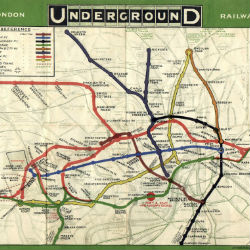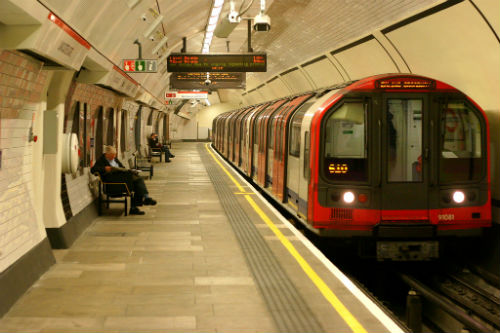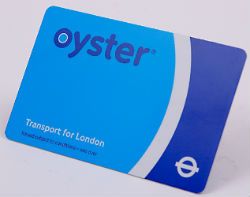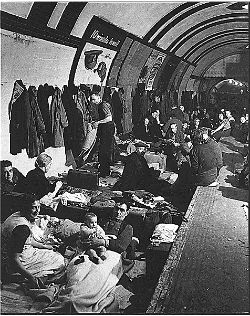
Queen Victoria was on the throne, Abraham Lincoln was President of the United States of America and on this day 150 years ago the world's first underground railway transit system opened to the public in London. But neither Queen Victoria nor President Lincoln ever took a ride on it.
In 1863 the London Underground (55% of it is now actually above ground), or the Tube as it’s now commonly known, opened from Paddington in west London and stretched nearly four miles east to Farringdon in central London. That stretch of line is still in operation today, and the total stretch of track has been extended by a further 245 miles across London, mostly north of the River Thames where geology favours tunnel-building.
Today, the Tube carries in excess of a billion people around 270 stations, employs nearly 20,000 people and even has its own museum. The New York Subway carries more than 1.5 billion passengers serving 468 stations, but this comparison doesn’t take into account London’s extensive inner-city overground rail network with more than 350 stations and serving areas where building tunnels and track is difficult, costly or impossible.

Central line Tube train at Lancaster Gate station. Image by tompagenet/Wikimedia.
 Ask passengers what they think of the Tube and you’ll get a variety of answers. Commuters are likely to complain of high ticket prices and overcrowding; party-goers will complain that it shuts too early, forcing them to use expensive cabs or unreliable and overcrowded night buses to get home; students may praise it considering most get a handsome 30% discount when using the network, and tourists will probably complain about something called an ‘Oyster card’.
Ask passengers what they think of the Tube and you’ll get a variety of answers. Commuters are likely to complain of high ticket prices and overcrowding; party-goers will complain that it shuts too early, forcing them to use expensive cabs or unreliable and overcrowded night buses to get home; students may praise it considering most get a handsome 30% discount when using the network, and tourists will probably complain about something called an ‘Oyster card’.
I feel sorry for the residents of Ongar and North Weald at the eastern edge of London – having their Tube stations closed must feel like being wiped off a map, abandoned almost. Imagine what it will have done to the house prices there. There’s also the sincere hope and prayer that come when you’re running to catch the last train, something New Yorkers will never know with their 24-hour Subway, and subsequent relief or disappointment when you’ve either caught the train or missed it.
For some reason time prolongs itself ‘down there’ – “The next Brixton train will arrive in approximately two minutes”, says the announcement. Two minutes is an extremely long time for a Londoner waiting for a Tube train and with no cellular reception handy. And to celebrate 150 years feels almost dishonest – engineering works take down parts of the network for days at a time quite regularly, especially on weekends, making it difficult to get around. And let's not even mention the heat.
 But the Tube does what it’s supposed to do quite well and has done for a century and a half, with today’s celebration a reminder of both its importance and longevity. And there’s a romance attached to the Tube – people meet at station entrances, stations were used as air raid shelters during the Second World War and distinctive trains and stations can be seen in films and TV productions. Buskers, Poems on the Underground and the beautiful Tube maps (skilfully marrying form and function) also add flair.
But the Tube does what it’s supposed to do quite well and has done for a century and a half, with today’s celebration a reminder of both its importance and longevity. And there’s a romance attached to the Tube – people meet at station entrances, stations were used as air raid shelters during the Second World War and distinctive trains and stations can be seen in films and TV productions. Buskers, Poems on the Underground and the beautiful Tube maps (skilfully marrying form and function) also add flair.
As you’d expect with any celebration, a whole raft of stats have been published about the Tube. Most are informative stats concerning infrastructure and passenger numbers amongst other things, but unpleasant stats also exist that highlight issues such as increasing fares, service delays, crime and ‘person under a train’ – suicides. A small selection of stats are posted below:
The good
- Number of miles travelled by each Tube train each year: 114,500 miles
- Total number of passengers carried each year: 1.171 billion
- Busiest stations: During the three-hour morning peak, London's busiest Tube station is Waterloo, with 57,000 people entering.
- The busiest station in terms of passengers each year is also Waterloo with 82 million.
- Average train speed: 20.5mph.
The bad
- In 2011 the Evening Standard reported that suicide figures for the decade were released by Transport for London. The rate had gone up to 80 per year, compared with 46 in the year 2000.
The ugly
- In a 12-month period over 2010-2011 more than 12,000 criminal offences took place on the London Underground network.
Many thousands will go home after work today in the evening rush hour oblivious to the Tube's rich history and probably tut their teeth at yet another delay or at sharing an overcrowded carriage, but love it or hate it the Tube is so central and unique to London that it looks like it is here to stay for yet another 150 years.




